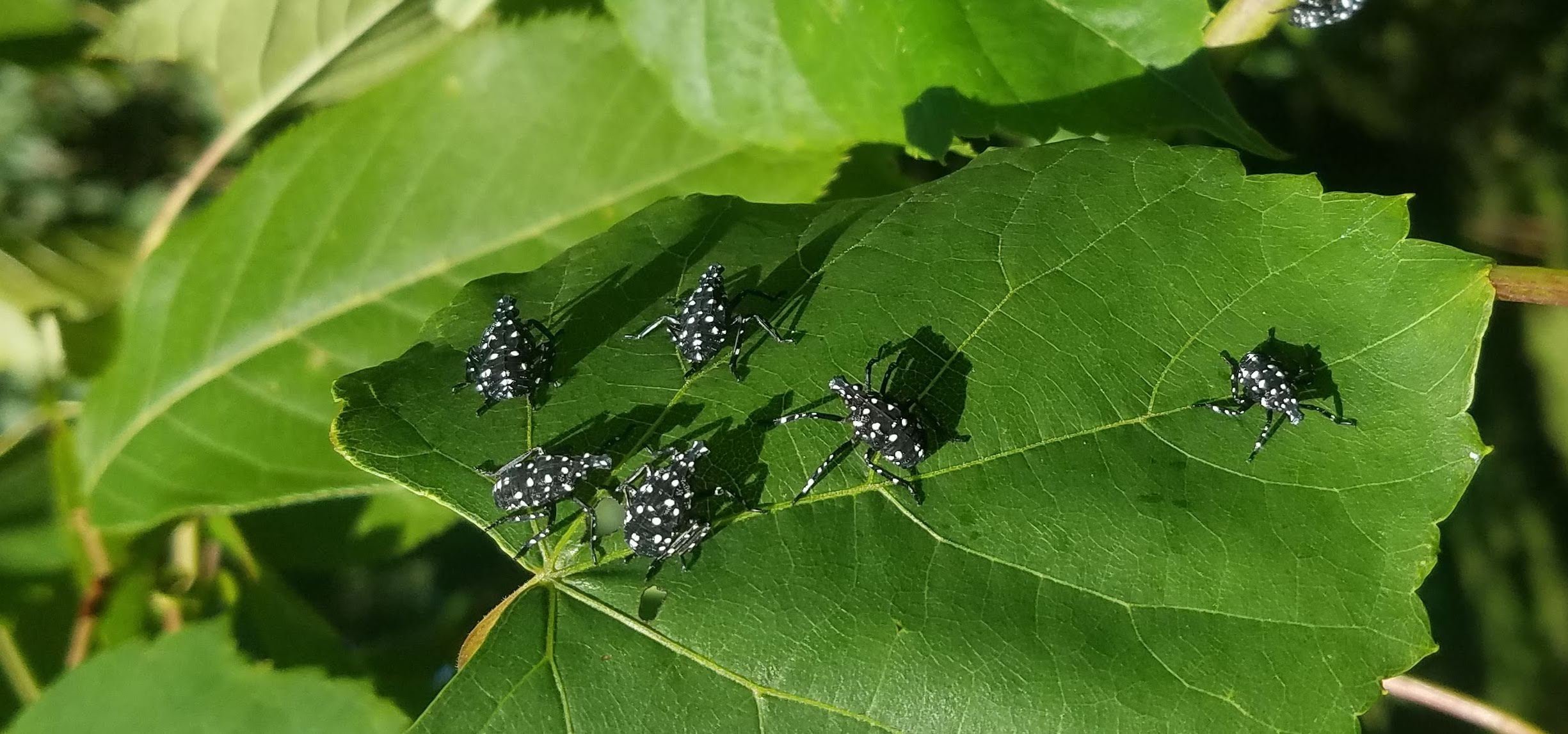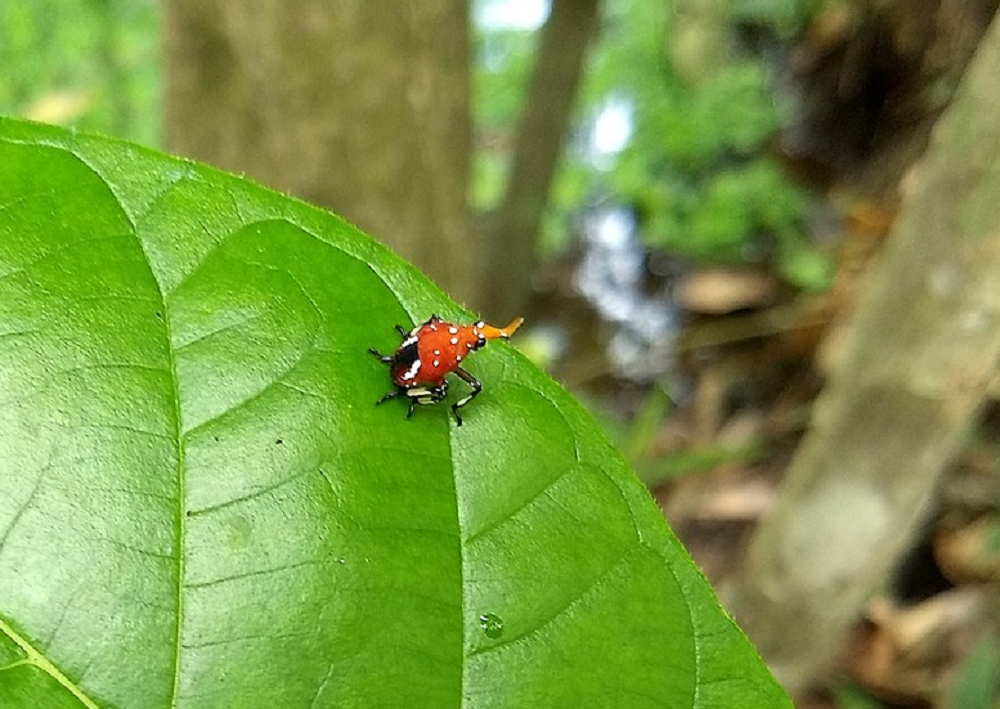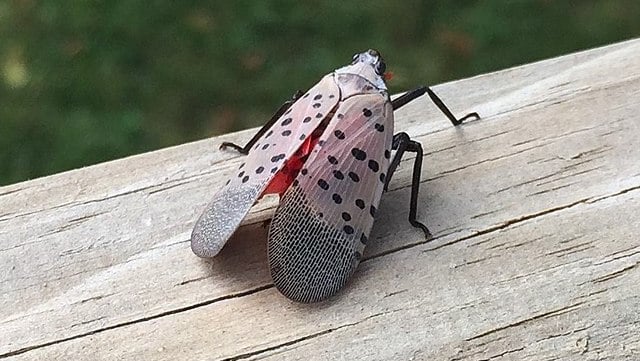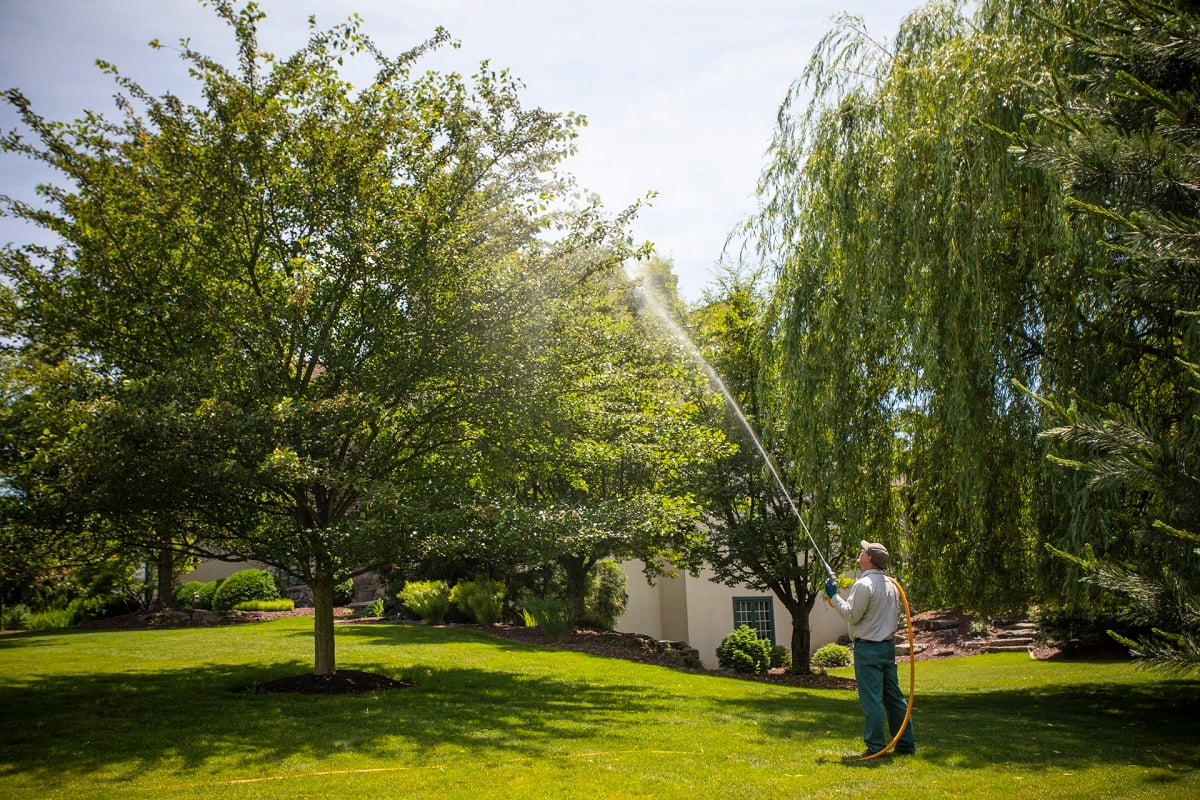There is an invasive species among us! It’s not an alien and it hasn’t come from a UFO, but it’s another 3-letter word—the SLF.
Ok, we realize you may not have heard of SLF - but we’re guessing you’ve heard of Spotted Lanternflies.
SLF is just the industry abbreviation for this highly invasive pest which came on our radar big-time in just the last few years (but has been in the US since 2014). An infestation of Spotted Lanternflies on trees is a major problem due to the highly destructive nature of this pest.
In this article, we’ll provide you with more detail on Spotted Lanternflies and how to get rid of them. We know there are a lot of different options out there and we want you to be most successful in your efforts.
The Life Cycle of Spotted Lanternflies
There is one generation of this pest each year. Spotted Lanternflies overwinter in egg masses that are laid on hard surfaces and hatch some time in May. From there, the Spotted Lanternflies babies (“nymphs”) begin feeding on host plants. 
This pest feeds on the sap of a plant and when there are high populations of them, this can cause significant damage. Unfortunately, the SLF is a pest that feeds on plants during all stages of its life, making it a threat throughout its entire lifecycle.
Nymphs undergo 3 stages (called “instars”) before fully maturing. During the first, second, and third instar, the SLF is black and white. During its fourth instar, it is red with white dots and black stripes.
By July, Spotted Lanternflies have typically grown to be considered full adults. If you’ve seen these pests before you likely know they are not strong fliers (though they do have wings). That’s why they’re classified as “planthoppers.”
The SLF is a strong jumper and will hop from one plant to the next. That means if you have an infestation on one plant, any nearby plants are potentially threatened.
Host Plants for Spotted Lanternflies
In its native region of China, “Tree of Heaven” was the preferred host plant of Spotted Lanternflies. However, since turning up in the United States, the list of plants that the SLF will feed on has grown rapidly (and seems to keep expanding). This pest appears to be getting less picky as time goes on.
This includes trees found commonly in Pennsylvania residential landscapes including (but not limited to), the following:
- Maple
- Black Walnut
- Birch
- Willow
- Oak
- Pine
- Poplar
- Sycamore
As this pest feeds, it excretes honeydew, a sugary substance, which can attract other pests like bees, wasps, and ants. As honeydew builds up, it can also promote the growth of fungi.
Implementing Spotted Lanternfly Control
If you’ve seen these pests on or near your property, then you might be looking into Spotted Lanternfly control. There are a number of options out there and you want to be sure to choose wisely.
Of the options are a number of DIY approaches. Among those include building a DIY Spotted Lanternfly trap, which is a safer alternative to the sticky bands that capture these pests (but also sometimes capture birds and other creatures).
Homemade traps require attaching a collection container (which could be a repurposed item such as a peanut butter jar) with some sort of tunneling system so that Spotted Lanternflies crawl into the dead-end collection system where they remain trapped.
These types of systems can work decently if constructed well. However, they’re only going to capture Spotted Lanternflies at early stages and when they’re still making their way up the tree.
If you already have lots of Spotted Lanternflies high in your branches, you’ve missed the opportunity to trap them. You also have to remember that you’ll need to go out and dispose of the collected pests—a task that sometimes grosses people out.
Similarly, you could also try a DIY Spotted Lanternfly spray, such as using dish soap to kill these pests on contact. You can mix equal amounts of dish soap and water and add it to a spray bottle. This mixture kills the SLF when sprayed directly on it.
The trouble with this approach, as you might imagine, is that you need to go out and spray each and every pest. This might be nearly impossible if you have Spotted Lanternflies up in your trees or you have a large number of them on your property.
Choosing Professional Spotted Lanternfly Control
Instead of taking a DIY approach when it comes to a pest as destructive as the Spotted Lanternfly, you probably ought to leave control in the hands of a pro.
Of course, with how many of these pests have popped up lately, you may have noticed that your options for Spotted Lanternfly control have also exploded. It’s hard to miss all of the different ads out there from various companies looking for a piece of the action!
Unfortunately, with so many people dealing with Spotted Lanternflies, many wanna-be entrepreneurs have seen them as a money-making opportunity.
We’ve written an entire article on how to make sure you are investing in professional Spotted Lanternfly control that actually works. The key is to find a company that has extensive tree care experience and hasn’t just jumped into the SLF arena to try and make a quick buck.
After all, Spotted Lanternflies are one of just dozens of different pests that could be affecting your trees and you want to hire a company that has tree care expertise for all of them.
At Joshua Tree, we feel strongly about our duty to educate homeowners about this dangerous pest. This is one of the largest pest threats our state has ever seen and as tree care experts, we want to do what we can to help. That’s why even if you don’t choose Joshua Tree, we want to make sure that you make a wise choice and effectively deal with the Spotted Lanternfly.
Choosing wisely will also give you peace of mind. When you choose a company that has your and your landscape’s best interest at heart, you can let go of your SLF worries and get back to enjoying your property to the fullest.
With the right control & prevention, you’ll gain valuable peace of mind. If you’re interested in having your trees inspected for spotted lanternfly and their health assured, contact us for a free consultation or give us a call at 833-JTE-TREE.
Image Source: Young spotted lanternfly, Fourth stage nymph, Adult Spotted lanternfly



